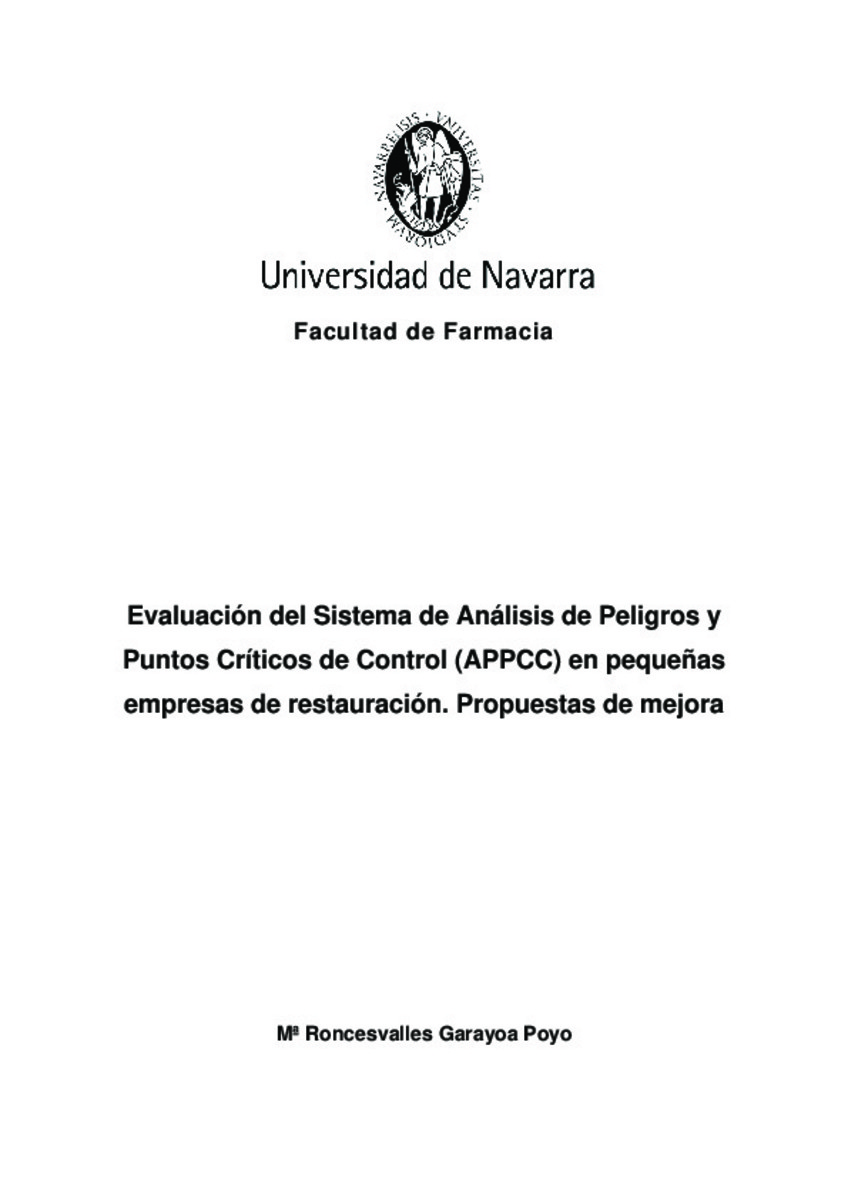Evaluation of the Hazard Analysis and Critical Control Points (HACCP) System in small catering companies. Proposals for improvement
Keywords:
Flexible strategies
Barriers and difficulties
Food safety
Publisher:
Servicio de Publicaciones de la Universidad de Navarra
Citation:
Garayoa, M.R. ""Evaluation of the Hazard Analysis and Critical Control Points (HACCP) System in small catering companies. Proposals for improvement"". García Jalón, I. y Vitas, A.I. (dir.). Tesis doctoral. Universidad de Navarra, Pamplona, 2012
Statistics and impact
0 citas en

0 citas en

Items in Dadun are protected by copyright, with all rights reserved, unless otherwise indicated.







